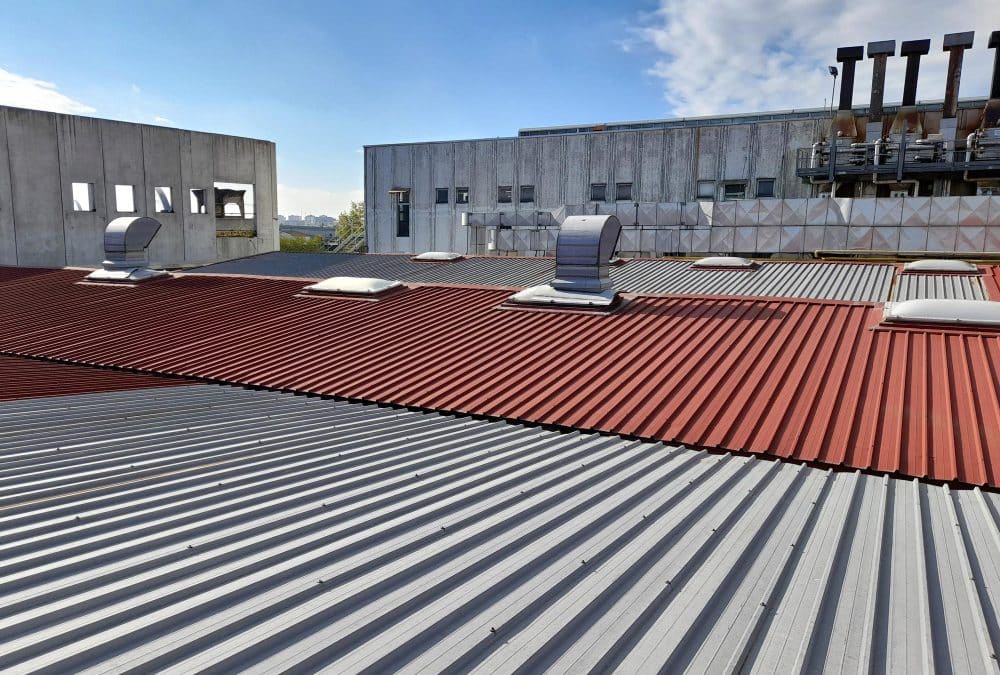Commercial TPO (Thermoplastic Olefin) roofing is popular for its durability and energy efficiency. Despite its many advantages, TPO roofing can encounter problems over time. Knowing how to tackle these issues promptly helps maintain the roof’s integrity and extend its life.
One major concern for TPO roofs is leaks. Identifying and fixing leaks early can prevent water damage and save on costly repairs. Regular inspections help spot potential leak sources, such as seams and flashing areas. Addressing these promptly ensures your roof remains watertight.
Another common issue is punctures and tears in the TPO membrane. High foot traffic and debris can cause these problems. Repairing them quickly with proper techniques prevents further damage and keeps your roof functioning effectively.
UV damage and thermal movement can also affect TPO roofs. Prolonged sun exposure can degrade the membrane, while temperature changes can cause expansion and contraction, leading to cracks. Proper maintenance and using UV-resistant treatments help mitigate these effects.
Effective drainage systems are essential for maintaining a TPO roof. Blocked drains and standing water can cause severe damage. Ensuring your drainage system is clear and functioning well prevents water buildup and extends the roof’s life.
By understanding and addressing these common issues, you can keep your commercial TPO roof in excellent condition, ensuring it serves you well for years to come.
Identifying and Fixing TPO Roof Leaks
Leaks in TPO roofs can lead to serious water damage if not addressed promptly. Here are steps to identify and fix leaks:
1. Regular Inspections:
- Conduct regular inspections to catch leaks early. Check seams, flashing areas, and around roof penetrations where leaks are more likely.
2. Spotting Signs of Leaks:
- Water Stains: Look inside the building for water stains on ceilings and walls.
- Pooled Water: On the roof, check for pooled water. Standing water can seep through weak spots.
- Mold and Mildew: These can be signs of water infiltration and need immediate attention.
3. Fixing Leaks:
- Small Leaks: For small leaks, clean the area and apply TPO-compatible sealant. Make sure it adheres well to prevent future leaks.
- Large Leaks: For larger issues, you may need to replace the affected section of the membrane. Cut out the damaged part, clean the area, and apply a patch of new TPO material. Ensure the patch overlaps the old material and is sealed tightly.
4. Professional Help:
- For complicated leaks or extensive damage, consider professional assistance. Experts can provide more permanent solutions and ensure your roof remains secure.
By identifying and fixing leaks early, you can avoid further water damage and extend the life of your TPO roof.
Addressing Punctures and Tears in TPO Membrane
Punctures and tears in TPO membranes are common issues, especially in areas with high foot traffic or where debris can fall on the roof. Here’s how to address these problems:
1. Identifying Punctures and Tears:
- Visual Inspection: Regularly walk the roof to look for visible punctures or tears.
- Feel for Damage: Run your hand gently over the surface to feel for weak spots or gaps.
- Check Vulnerable Areas: Pay extra attention to areas around HVAC units, vents, and other roof penetrations.
2. Temporary Fixes:
- Patching Kits: Use a TPO patching kit for quick repairs. Clean the area around the damage, apply the patch, and press it firmly in place.
- Sealant Application: For minor holes, clean the area and apply TPO-compatible sealant to cover and protect the spot.
3. Permanent Repairs:
- Replace Damaged Sections: For larger tears or heavily damaged areas, cut out the damaged membrane. Clean the underlying surface, then apply a new section of TPO membrane, making sure it overlaps the existing material. Seal the edges well to ensure a watertight finish.
- Reinforcing Vulnerable Areas: Consider adding extra layers or protective mats in high-traffic areas to prevent future damage.
4. Preventive Measures:
- Limit Roof Access: Restrict access to the roof to reduce the risk of punctures.
- Install Walkways: Place walkways or pads to protect the membrane from foot traffic and equipment.
By addressing punctures and tears promptly, you can maintain the integrity of your TPO roof and prevent more extensive damage.
Dealing with UV Damage and Thermal Movement
TPO roofing is durable but can suffer from UV damage and thermal movement over time. Sun exposure can weaken the material, while temperature changes cause expansion and contraction, leading to potential cracks. Here’s how to manage these issues effectively:
1. Preventing UV Damage:
- UV-Resistant Coating: Apply a UV-resistant coating to protect the TPO membrane. This layer helps reflect harmful rays, reducing degradation.
- Regular Inspections: Check for signs of UV damage, such as fading or brittleness. Address any issues promptly to maintain the integrity of the roof.
2. Managing Thermal Movement:
- Expansion Joints: Ensure your roof has adequate expansion joints to accommodate temperature changes. These joints allow the membrane to expand and contract without tearing.
- Flexible Sealants: Use flexible sealants around roof penetrations and seams. These sealants move with the material, preventing cracks.
3. Repairing Damage:
- Sealing Cracks: For minor cracks, clean the area and apply a TPO-compatible sealant. Larger cracks may require a patch or section replacement.
- Replacing Damaged Areas: If UV damage is extensive, consider replacing the affected sections. Cut out the damaged part, clean the area, and apply a new TPO membrane piece.
By addressing UV damage and thermal movement proactively, you can extend the life of your TPO roof and keep it in top condition.
Maintaining Proper Drainage Systems
Proper drainage is crucial for the health of your TPO roof. Without an efficient drainage system, water buildup can cause significant damage, leading to leaks and structural issues. Here’s how to ensure your drainage system works effectively:
1. Inspecting Drainage Systems:
- Regular Checks: Inspect gutters, downspouts, and drains regularly to ensure they are clear and functioning. Blockages can lead to water pooling on the roof.
- Look for Standing Water: After a heavy rain, check for standing water on the roof. Persistent puddles indicate a drainage problem that needs addressing.
2. Clearing Blockages:
- Remove Debris: Clear leaves, dirt, and other debris from gutters and drains. Use a scoop or trowel and safely dispose of collected materials.
- Flushing Systems: Flush the system with water to ensure it flows freely. Use a hose to direct water through gutters and downspouts, checking for obstructions.
3. Regular Maintenance:
- Seasonal Cleaning: Clean the drainage system seasonally, especially in the fall and spring. This helps prevent blockages from fallen leaves and spring growth.
- Gutter Guards: Consider installing gutter guards to keep debris out while allowing water to flow. These can reduce the need for frequent cleaning.
4. Professional Assessment:
- Professional Inspections: Have a professional assess the system regularly, especially if you notice persistent issues. They can identify and fix underlying problems.
Maintaining a clear and efficient drainage system protects your TPO roof from water damage and extends its lifespan.
Conclusion
Tackling common issues in commercial TPO roofing is vital for ensuring the roof’s longevity and performance. By regularly identifying and fixing leaks, addressing punctures and tears, managing UV damage and thermal movement, and maintaining proper drainage systems, you can keep your roof in excellent shape. These proactive steps help prevent small problems from becoming large, costly repairs, ensuring your roof continues to protect your building effectively.
For expert assistance with maintaining and repairing your TPO roof system, contact Mike Huddleston Roofing Systems. Our experienced team provides professional service and ensures your roofing project is handled with care and precision. Reach out to us today and keep your commercial roof in top condition.


I do have a question, Ive been doing TPO for about 15 years now, and in 2 situations ive had leaks due to condinsation from screws freezeing in buildings with no heat. ive had people call about a drain leak which was old cast iron, and a new TPO aluminum drain was put in retrofit, so it wasnt backing up, and it would drip like a leak in winter. my question is, the company i work for likes to use Fan-fold insulation which is 1/2″ on overlays, and 6″ foam board on new construction, though ive suggested Polyiso, my question is, will the poly help with condensation vs the foam board insulation. none of the overlays i have done have leaked. and its only been 2 times in the passed 4 years where the building was not heated. and in winter seems to leak in diffrent locations. but if u look up at each screw during a cold snap every screw is frozen. inside the building, which makes me think once stuff warms up outside the same happens inside. what are your thoughts on it?